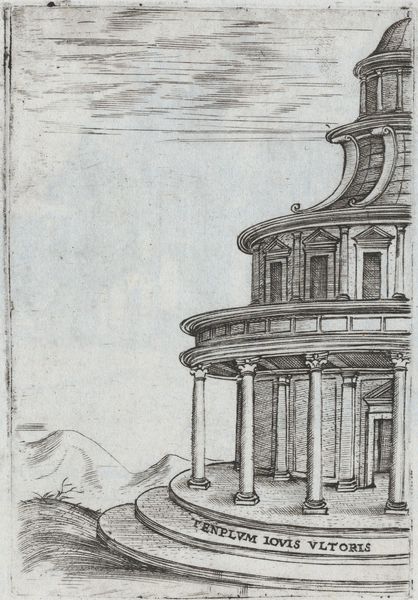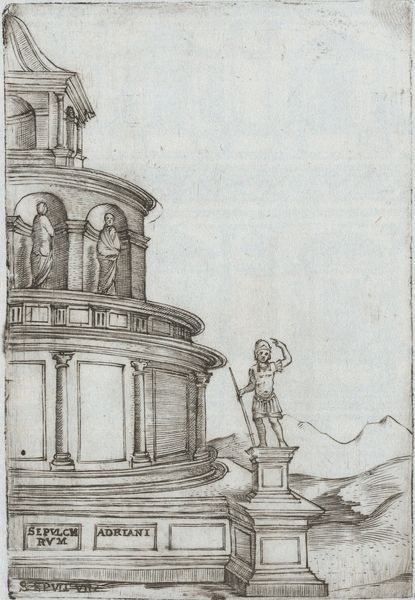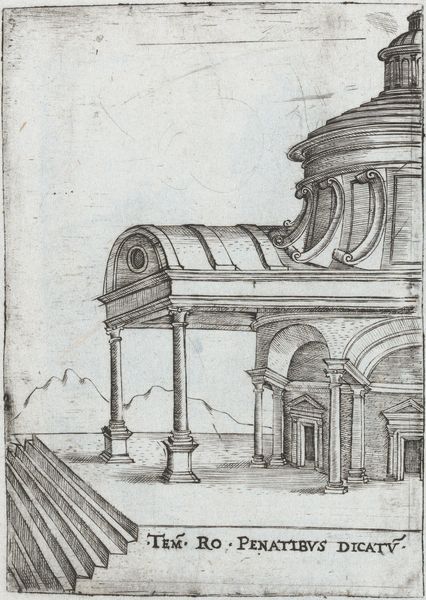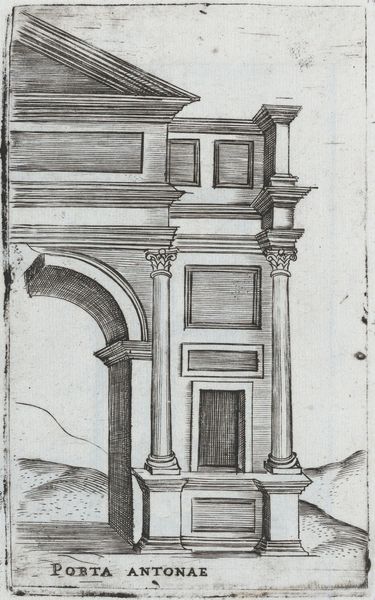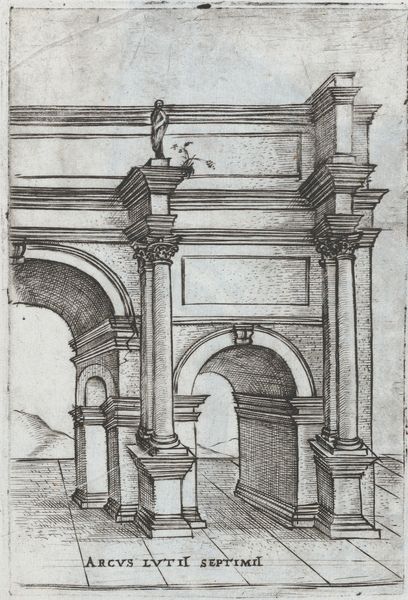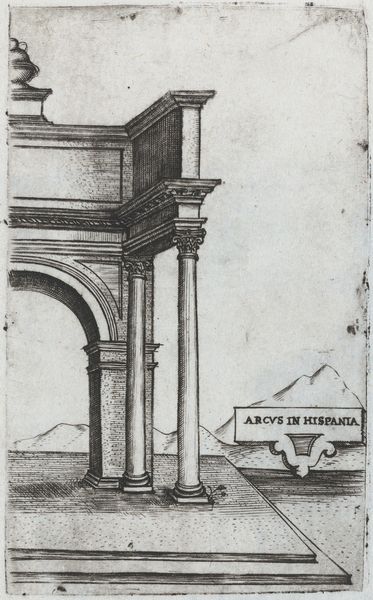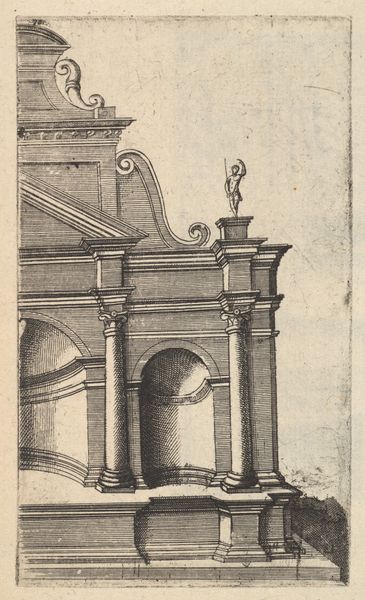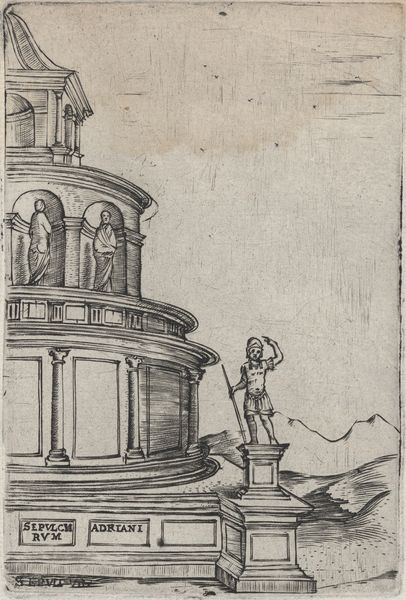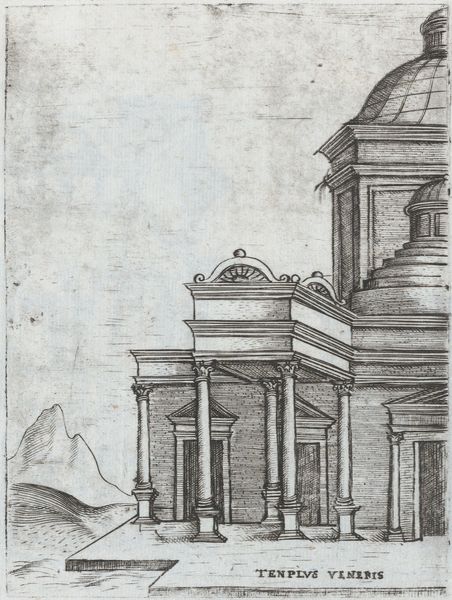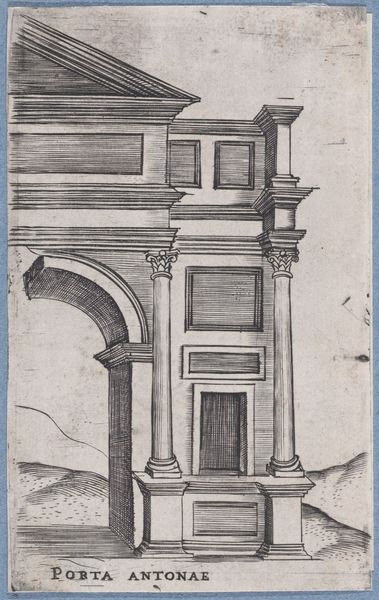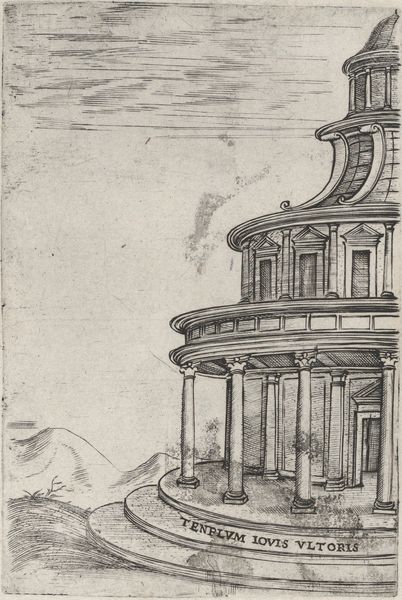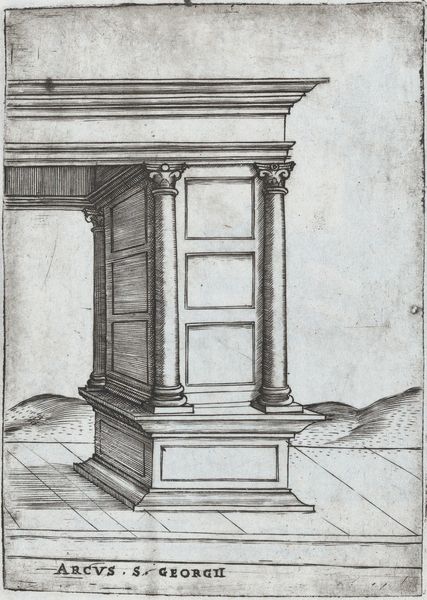
Palatium Caesaris Parisiis, from a Series of Prints depicting (reconstructed) Buildings from Roman Antiquity 1530 - 1550
0:00
0:00
drawing, print, engraving, architecture
#
drawing
# print
#
11_renaissance
#
ancient-mediterranean
#
column
#
arch
#
engraving
#
architecture
Dimensions: Plate: 4 7/8 × 6 7/16 in. (12.4 × 16.3 cm) [edges of the plates are not straight, the height varies from 10-12.4, and the width varies from 15.2 to 16.3cm due to the fact that the lower left corner has been cut off]
Copyright: Public Domain
This etching, titled *Palatium Caesaris Parisiis*, comes from a series of prints depicting reconstructed buildings from Roman antiquity, made in the mid-16th century by the Monogrammist G.A. & the Caltrop. This print offers a glimpse into the Renaissance fascination with classical antiquity and its impact on the cultural identity of 16th-century Europe. As you observe the architectural details, consider the revival of classical forms during the Renaissance and the ways in which artists sought to emulate and reimagine the grandeur of ancient Rome. The temple, dedicated to Mercury, suggests the significance of trade and communication in Roman society. The inclusion of classical motifs reflects a desire to connect with a prestigious past, to legitimize contemporary power structures. Notice how the artist blends historical reconstruction with their own interpretation, and reflects the cultural values and aspirations of the Renaissance. Consider how such depictions contribute to the construction of cultural memory and the ongoing dialogue between past and present.
Comments
No comments
Be the first to comment and join the conversation on the ultimate creative platform.

